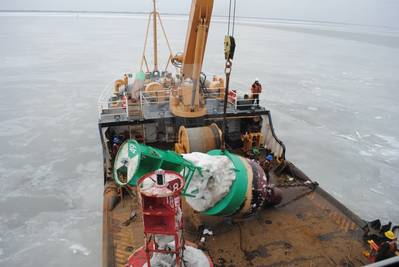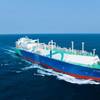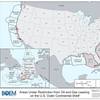US Coast Guard Issues RFP for New Waterways Commerce Cutters
The U.S. Coast Guard is seeking proposals from shipyards to design and construct its new river buoy and inland construction tenders as part of the waterways commerce cutter (WCC) program.
In total, the Coast Guard plans to acquire 16 river buoy tenders, 11 inland construction tenders and three inland buoy tenders to replace its aging inland tender fleet, which has an average vessel age of over 55 years.
The request for proposal (RFP) released on April 30 encompasses designing the river buoy tender and inland construction tender (designs which share 95% commonality), constructing an initial river buoy tender and inland construction tender based on those completed designs, and producing additional cutters. The two vessel variants are expected to be common except for hull length, working deck layouts, and deck equipment, including the crane.
The deadline to submit responses is July 30, and the Coast Guard expects contract awarding will take place in early 2022.
The Coast Guard is currently finalizing its plan for acquiring the inland buoy tenders, which will be procured separately from the other two variants.
On March 24, the DHS Acquisition Review Board approved the WCC program to proceed from the analyze/select phase to the obtain phase, following several years of design analysis, industry engagement, operator input, scale-model testing and other analyses.
The new vessels will be a welcome replacement for the agency's current inland tender fleet, which is approaching obsolescence. Many of the legacy cutters do not support mixed-gender crews due to original design constraints. The new WCCs will not only feature improved habitability and will accommodate mixed-gender crews, they will also have greater endurance, speed and deck load capacity than their predecessors.
The WCC program has accelerated the acquisition by approximately a year to ensure the Coast Guard continues to meet its vital missions throughout the Marine Transportation System, targeting initial operational capability by 2025 and full operational capability by 2030.
 Coast Guard indicative designs of a river buoy tender, inland construction tender and inland buoy tender. (Image: U.S. Coast Guard)
Coast Guard indicative designs of a river buoy tender, inland construction tender and inland buoy tender. (Image: U.S. Coast Guard)
















